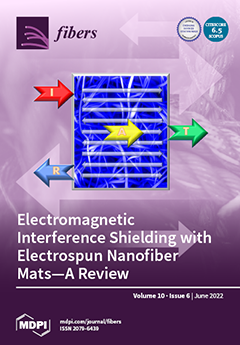The performance of carbon fibers depends on the properties of the precursor polyacrylonitrile (PAN) fibers. Stretching of PAN fibers results in improved tensile properties, while potentially reducing its compressive properties. To determine optimization trade-offs, the effect of coagulation conditions and the stretching process
[...] Read more.
The performance of carbon fibers depends on the properties of the precursor polyacrylonitrile (PAN) fibers. Stretching of PAN fibers results in improved tensile properties, while potentially reducing its compressive properties. To determine optimization trade-offs, the effect of coagulation conditions and the stretching process on the compressive modulus in the transverse direction (
ET) was investigated. A method for accurately determining
ET from polymer fibers with non-circular cross-sectional shapes is presented. X-ray diffraction was used to measure the crystallite size, crystallinity, and crystallite orientation of the fibers.
ET was found to increase with decreasing crystallite orientation along the drawing direction, which decreases the tensile modulus in the longitudinal direction (
EL) proportionally to crystallite orientation. Stretching resulted in greater crystallite orientation along the drawing direction for fibers formed under the same coagulation conditions. Increasing the solvent concentration in the coagulation bath resulted in a higher average orientation, but reduced the impact of stretching on the orientation. The relationship between
ET and
EL observed in the precursor PAN fiber is retained after carbonization, with a 20% increase in
ET achieved for a 2% decrease in
EL. This indicates that controlled stretching of PAN fiber allows for highly efficient trading off of
EL for
ET in carbon fiber.
Full article





